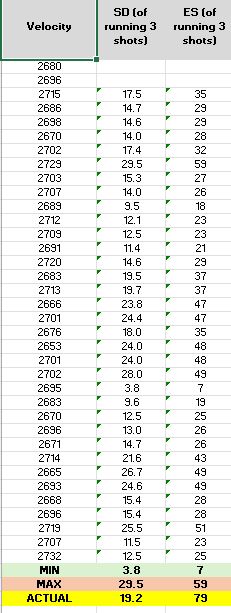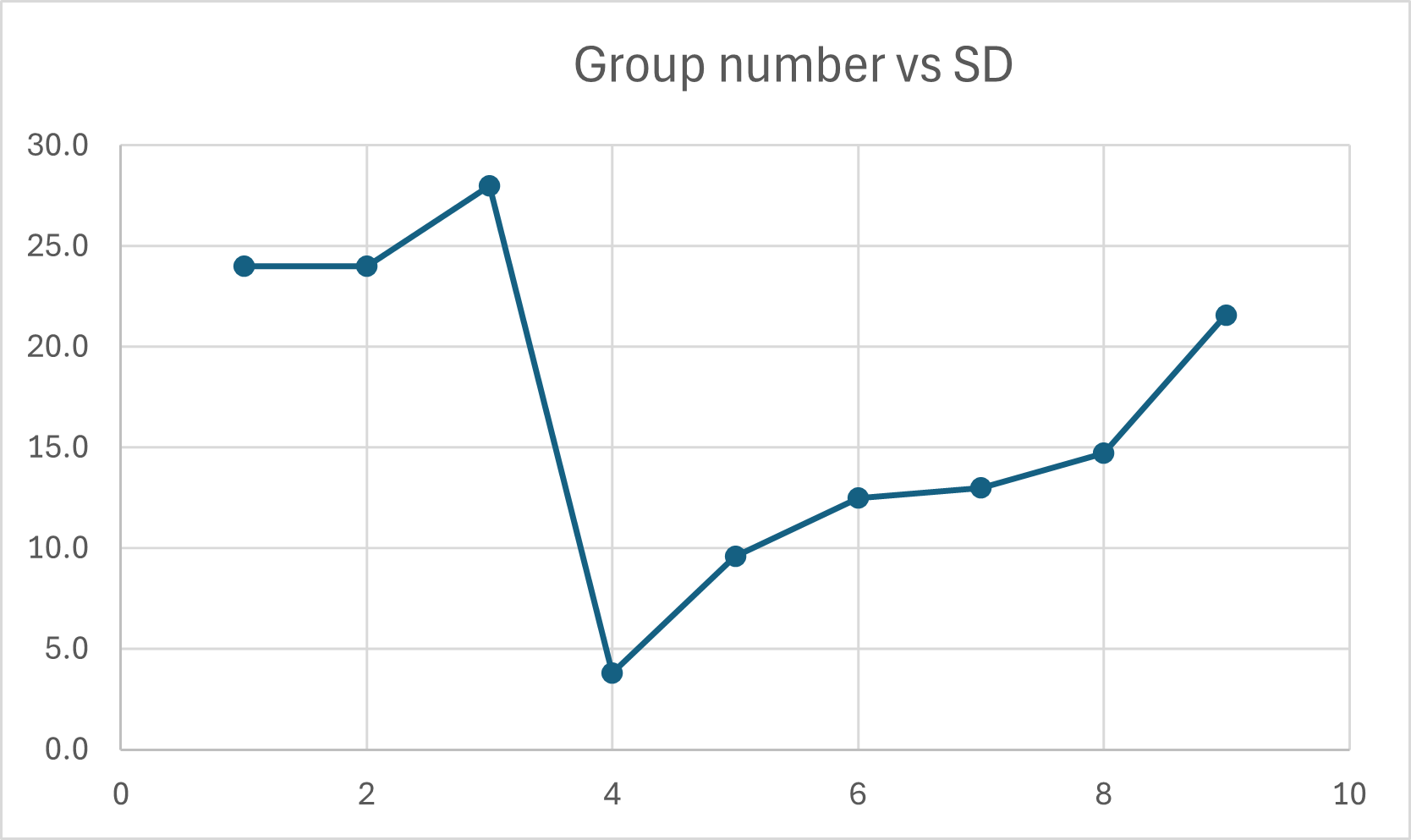Agreed. What does a 3 shot group tell us about ES?
Well let's look at the ES of 15 different groups (ranging from 7-20 shots) vs the ES you get from the first 3 shots in the group. It looks like this.

The first 3 shots aren't very representative of the (more true) ES that appears with a larger sample in the majority of cases.
we can also look at a sample of 39 shots with the same rifle/load, sampled artificially as "3 shot groups" and see how representative of the true ES 3 shot groups are. It turns out that they are wildly variable; and none come close to demonstrating the "truer" ES measured across all shots.
However ES is quite a poor measure of how consistent our velocity is and how consistent we can expect it to be in future. It only takes into account the 2 most widely separated values and ignores the values of all other shots. Standard deviation is a better tool. Depending on the variability of your velocity, you should expect to get "reasonably" close to the true SD value across a sample of 10-15 rounds. Standard deviation is what should be used to assess hit probability.
4x your standard deviation (2 sigma) should be the range in which 95% of your velocities can be expected to fall. Note that I seem to have a sample size where that is currently true. I would expect 99.7% of my shots to fall within a range of 6x my SD - i.e. about 115-120fps "REAL ES". Note this is a .223 and every .223 load that I've collected sufficient data on, across several different rifles, brass, bullets and powders, loaded by different people, seems to end up with an SD around 15-20.
3 shot groups do not give you a good estimate of your SD. The standard practise of shooting 3-shot groups at different charge weights for load development and looking for a low value is invalid.
It can look like this:
You might conclude that load number 4 is the best load based on the consistent SD. There's a "node" there, right?
Wrong - every group on this chart is shot with the same load. The 3-shot SDs tell you essentially nothing.
Welcome guest, is this your first visit? Create Account now to join.
Welcome to the NZ Hunting and Shooting Forums.
Search Forums
User Tag List
Results 1 to 15 of 49
Threaded View
-
09-08-2024, 12:12 PM #21
Similar Threads
-
Stupid rabbit question….
By YosemiteSam in forum HuntingReplies: 15Last Post: 06-09-2023, 09:05 PM -
A stupid question
By NO4 in forum Firearms, Optics and AccessoriesReplies: 26Last Post: 09-08-2022, 07:58 PM -
Stupid question about river access
By MB in forum Game Bird HuntingReplies: 7Last Post: 11-05-2017, 12:43 PM
Tags for this Thread
Welcome to NZ Hunting and Shooting Forums! We see you're new here, or arn't logged in. Create an account, and Login for full access including our FREE BUY and SELL section Register NOW!!




 40Likes
40Likes LinkBack URL
LinkBack URL About LinkBacks
About LinkBacks







 Reply With Quote
Reply With Quote


Bookmarks